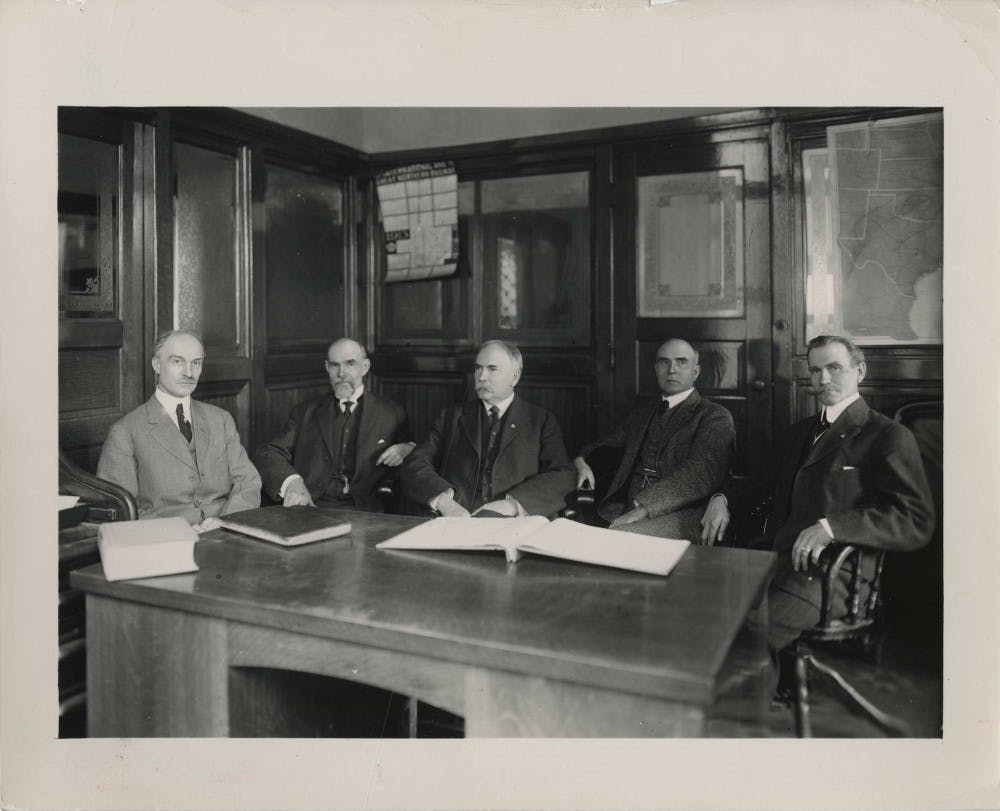Editor's note: In honor of the university's centennial year, The Daily News is counting down 100 days to the university's celebration Sept. 6 with 100 of Ball State's most famous traditions and figures. Check back each day to read about Cardinal history.
Ball State’s roots can be traced back to five American industrialists and philanthropists who came to Muncie more than 100 years ago, chasing a dream of business success.
Thanks to a $200 loan they borrowed from their Uncle George, brothers Edmund and Frank Ball founded Ball, a manufacturing business, in 1880. The two owned a small shop in Buffalo, New York, producing wood-jacketed tin cans for paint, varnish and oil.
In 1884, the brothers began making glass home-canning jars, known as "Ball Jars."
After the three other brothers, William, Lucius and George joined the family business, Ball Brothers Glass Manufacturing Company was incorporated in 1886.
Two years later, the company moved to Muncie and built a factory.

From "canning kings to community leaders," the five Ball brothers stayed actively involved in the community after moving their glass manufacturing operations to Muncie in 1886. This story published in the April 16, 1982 edition of the Weekend, a newsmagazine supplement to the Daily News.
The push to the Hoosier state was due to the abundance of natural gas in the area, an essential to making glass.
What first started as seven acres and 100 employees grew to 70 acres and thousands of employees.
After reaching financial success, the Ball brothers began giving back to the community.
In 1918, the five Ball brothers led a charge to buy the buildings and grounds of the Muncie National Institute, which was donated to the state of Indiana. That year, the Eastern Division of the Indiana State Normal School was founded.
In recognition of the Ball family, the school was named Ball Teachers College in 1922, Ball State Teachers College in 1929 and finally, Ball State University in 1965.
In 1937, a bronze sculpture known as Beneficence was installed on campus to honor the Ball brothers' contributions to the community. The five columns of Indiana limestone that surround the sculpture represent each of the five brothers.
Read more centennial content here.
Contact Allie Kirkman with comments at aekirkman@bsu.edu or on Twitter @alliekirkman15.





